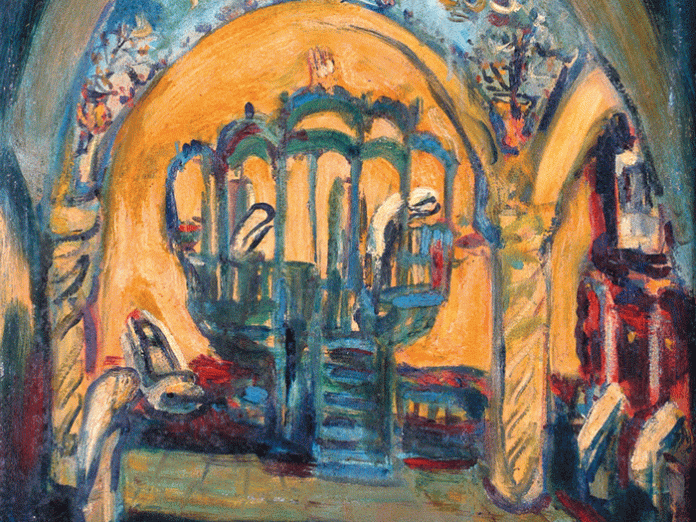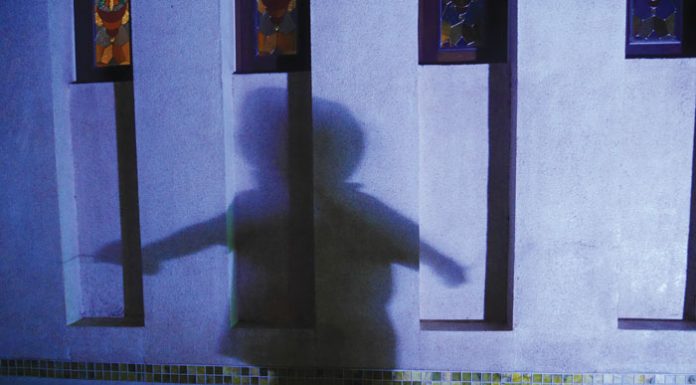Leading Women’s Prayer
In the Jewish cemetery in Worms, Germany, lies a curious grave. It’s the final resting place of a Jewish woman named Urania, who died in 1275. On her tombstone she’s identified as the daughter of Abraham, and also “the leader of the singers” who “sang the piyutim for the women in a melodious voice.” Urania wasn’t alone: Some other medieval Jewish women were also identified as leaders of Jewish women’s prayer, both on tombstones and in other records.
A woman named Richenza, who lived in the German city of Nuremberg in the Middle Ages, was recorded as being a “prayer leader of the women” in that community’s memorial book. In 1196, when the Jewish community of Worms and nearby areas was attacked by Crusaders, Dulcea, the wife of Rabbi Elazar ben Judah of Worms (1165-1230), and their daughters Bella and Chanah, were among those brutally murdered. After this unspeakable tragedy, Rabbi Elazar penned a famous heart-rending poem about his devastated community; in it he refers to Dulcea as a pious, modest woman who taught other women how to pray and who beautified their tefillos with music.
This phenomenon of some Jewish women leading other women in prayer spread from medieval Germanic lands throughout the Ashkenazi world. In time, they became known as firzogerin or zogerkeh, from the Yiddish word zog or speak. Jewish graveyards throughout Europe contain the final resting places of these devout women, often describing them as such in Hebrew on their tombstones. Jewish women were often much more comfortable in Yiddish than in Hebrew, and firzogerin would translate prayers in shul, helping women to understand the tefillos, follow the service, and sing.
One relatively contemporary account of a modern firzogerin comes from Sophie Horn, who was born in Grebenki, Ukraine, in 1900 and died in 1968 in Brooklyn. In 1962, Mrs. Horn’s nephew begged her to write about her mother, who’d served as her community’s firzogerin. The resulting letter offers a unique window into a largely forgotten world. “There wasn’t a single woman as educated as my mother,” Mrs. Horn recalled. “whenever someone needed a letter or an appeal or a petition to Tsar Nikolai”—Czar Nicholas II of Russia, who ruled from 1894 to 1917—“my mother wrote it. In the synagogue, she showed the women the place in the prayerbook and helped them follow the cantor during the service (i.e., she was the zogerke) and everyone idolized her… She taught (women and girls) how to read and write Yiddish and Russian and how to say their prayers (davenen)…”
Women’s Shuls
Another largely forgotten aspect of women’s tefillos in the Ashkenazi world is spaces that were used by women only as a place to come together to pour out their hearts to Hashem. Women’s shuls were another phenomenon that began among Germanic medieval communities and spread to other areas. Called weibershuls or veibershuls, they are named for the Yiddish word for women, veiber, and gave pious women a dedicated space for prayer.
The first weibershul was built in Worms in 1213. Long ruined, it was restored between 1957 and 1960 and gave modern researchers a detailed view into what life might have been like for the women who davened there. One beautifully carved stone pillar featured a palm tree and a tree of life, and was dedicated to a young woman named Bellette. This might refer to Bella, the daughter of Dulcea of Worms, murdered with her mother and sister by crusaders in 1196. Later, Frankfurt, Prague and some other towns had their own weibershuls as well, often close to the town’s regular shul.
References to separate weibershuls can be found throughout Ashkenazi communities. In the 13th century, Rabbi Meir ben Yekusiel of Rottenburg recorded that his rebbe, the Maharam of Rottenburg, used to sleep in the “women’s shul” on Erev Yom Kippur, since it was conveniently empty of women at night. In the 15th century in Germany, the Maharil, Rabbi Yaakov ben Moshe Levi Moelin (1365-1427), was asked whether women could light Shabbos candles in a women’s synagogue that was located in the wine cellar of the regular shul’s shamash.
One vivid account of what davening in a women’s shul was like comes from the Zambrow Yizkor Book, a compilation of memories of life in Zambrow, Poland, before the Holocaust. One contributor, Y. Meshuli, recalled a distinguished woman named Bayla. She ran the local cheder along with Rabbi Israel Chaim Fleischer—with Rabbi Fleischer teaching the boys and Bayla instructing the girls. “(A) tall, stout Jewish lady would walk in (to the cheder), with a stern smile on her lips, her head covered in a colored babushka,” Mr. Meshuli recalled.” She ordered the boys to leave cheder and go eat lunch. “In the meantime, Bayla would don her metal-rimmed glasses and study Hebrew with the girls, holding a pointer in her hand. Later on, she would teach them how to recite a blessing. In taking the ritual portion of challah in preparing to bake challahs for the Sabbath, or bread, lighting candles—with the movement of her hands, showed them how to shut their eyes and how the blessing was to be recited, etc.”





















